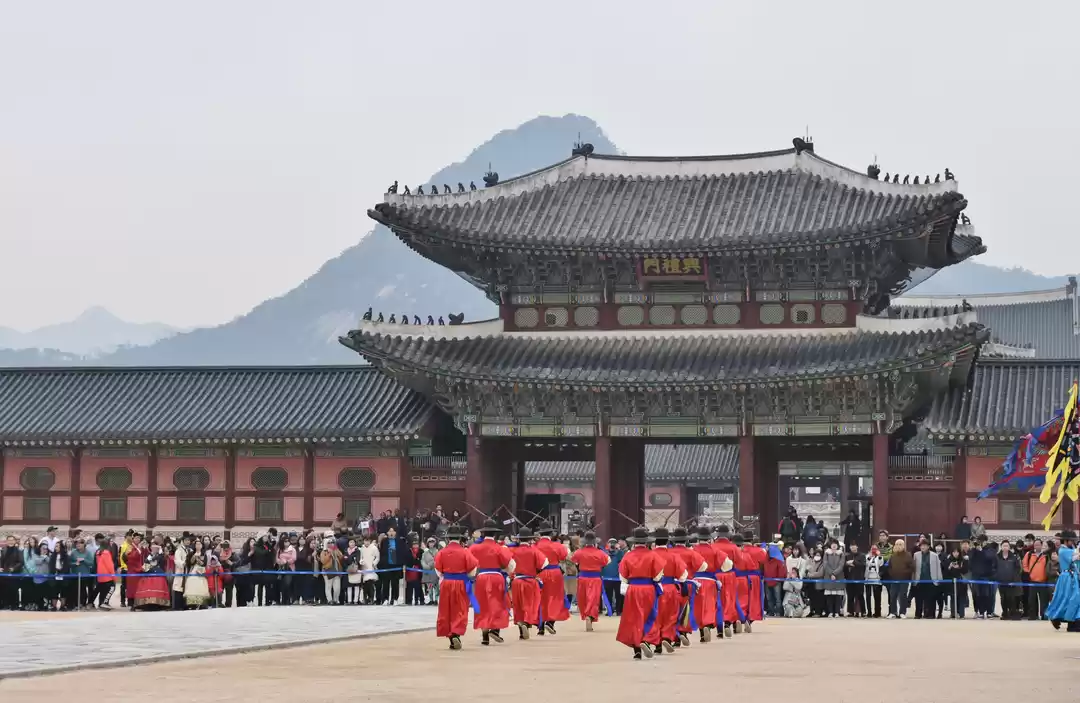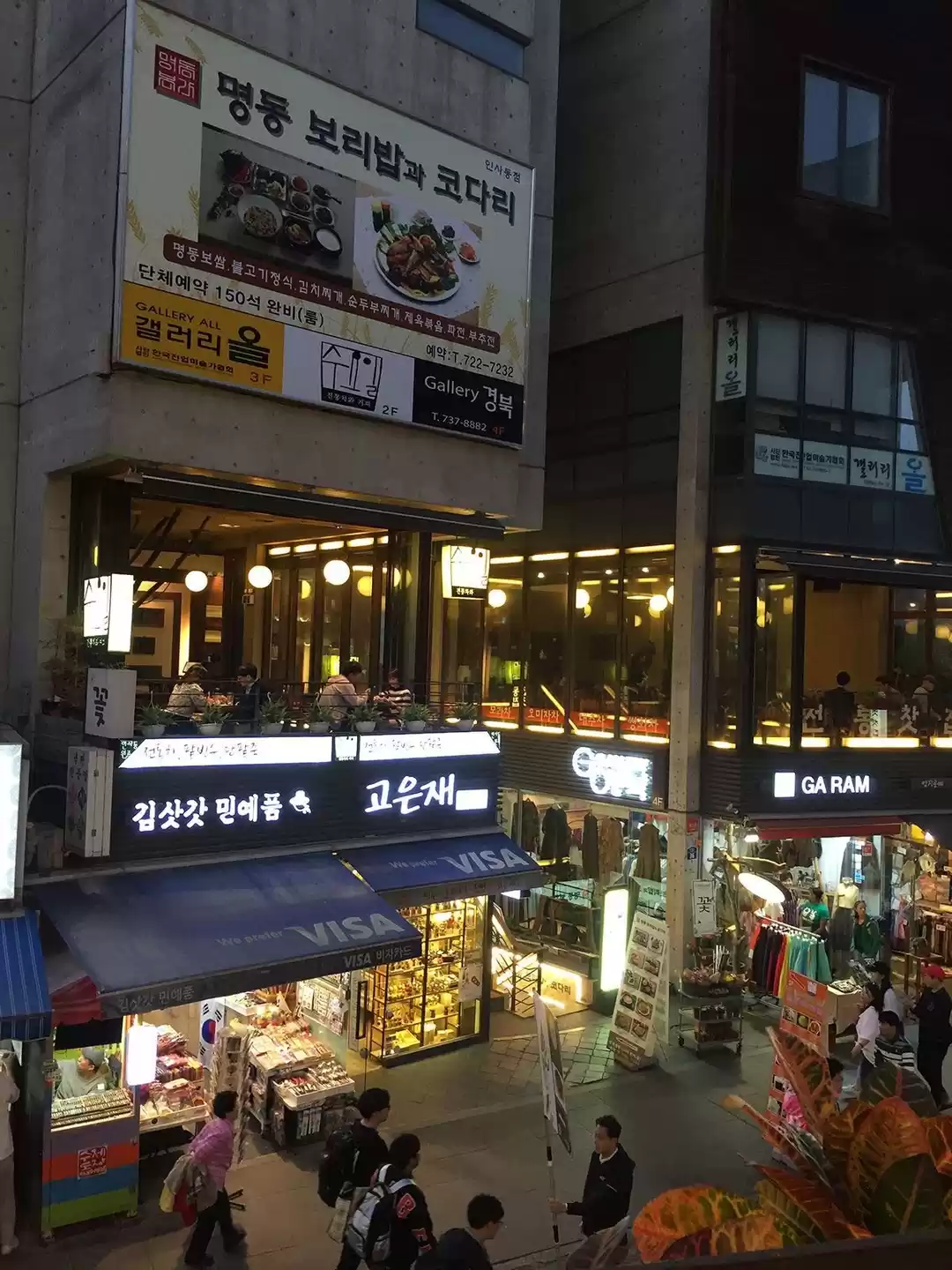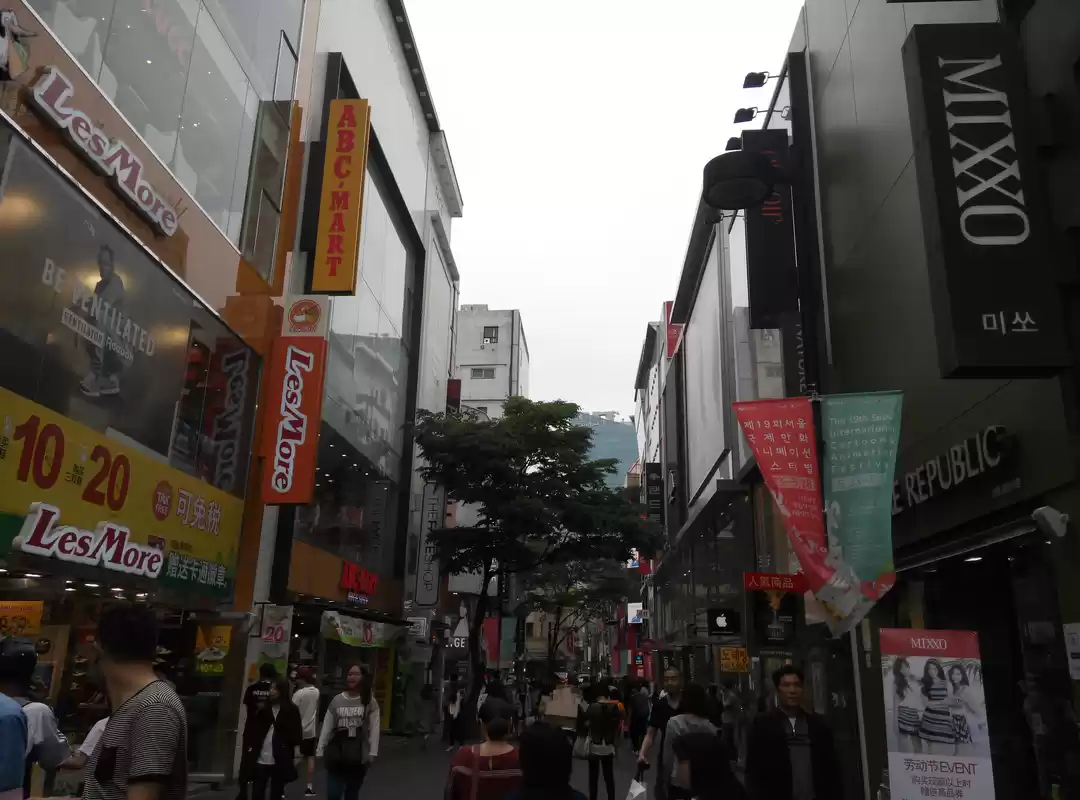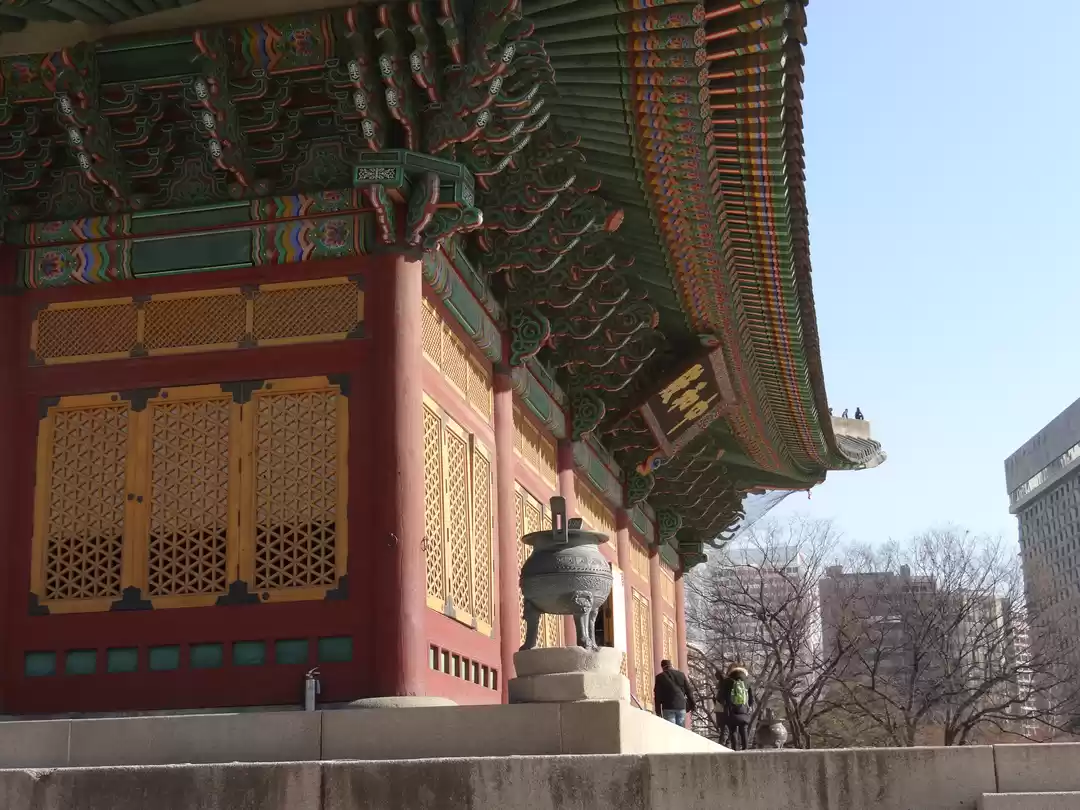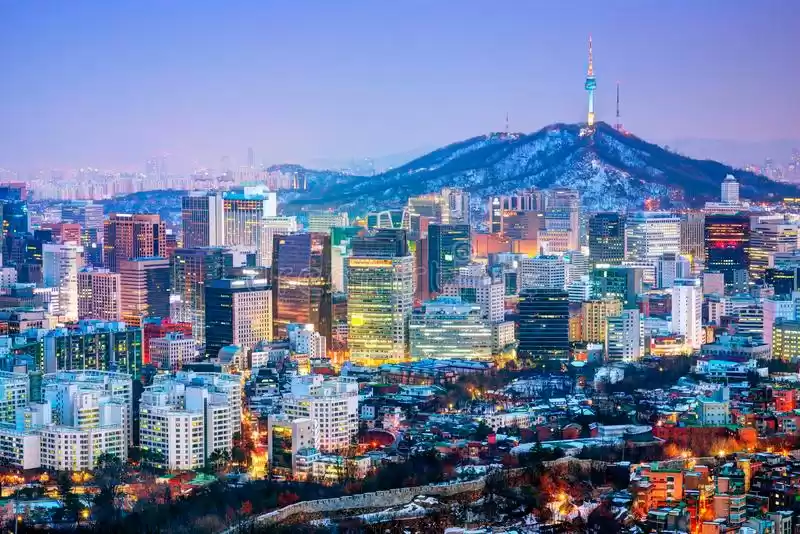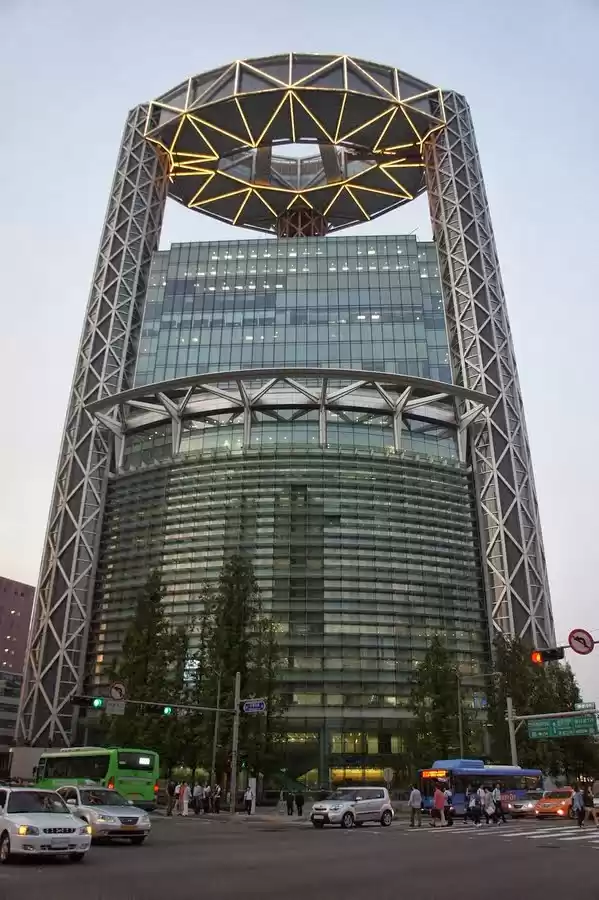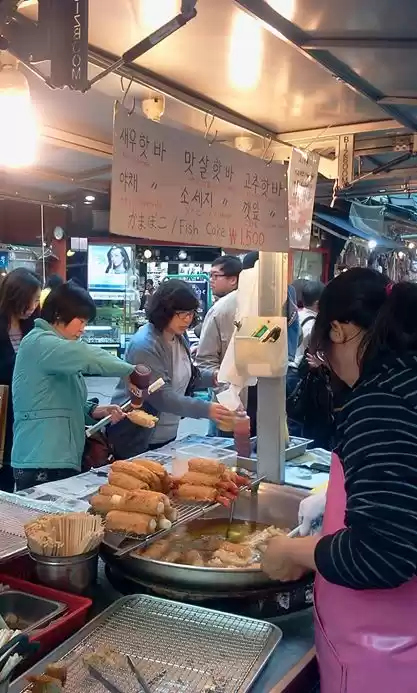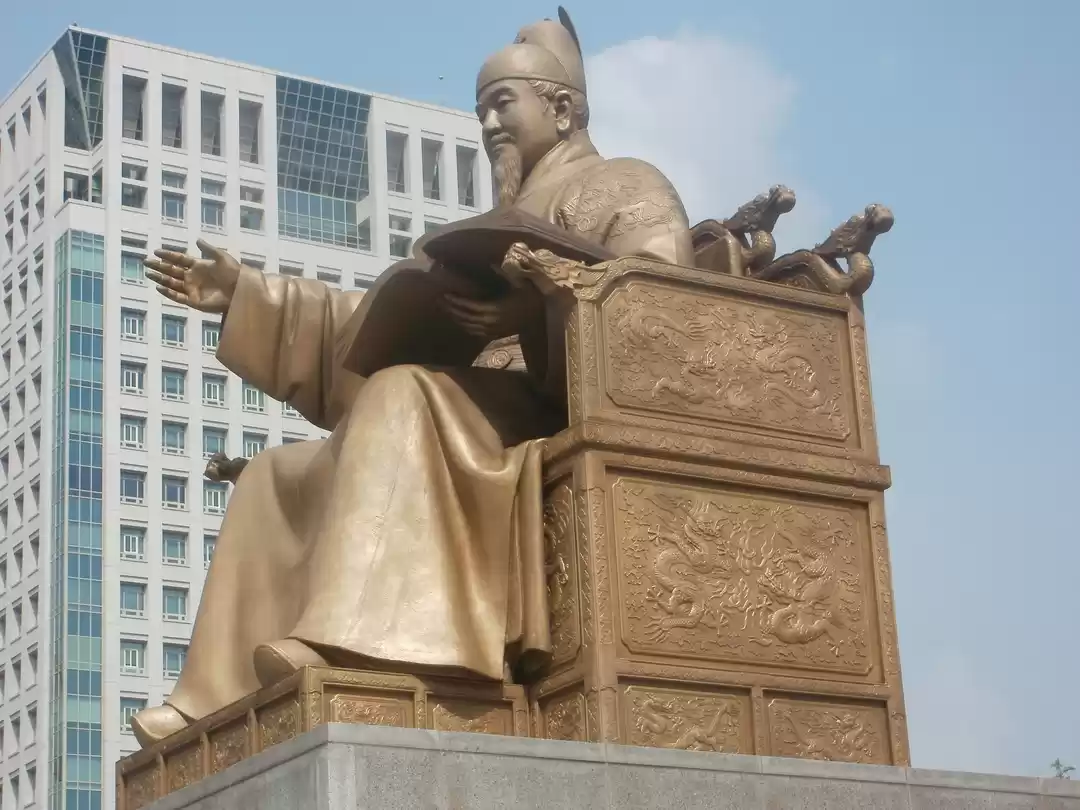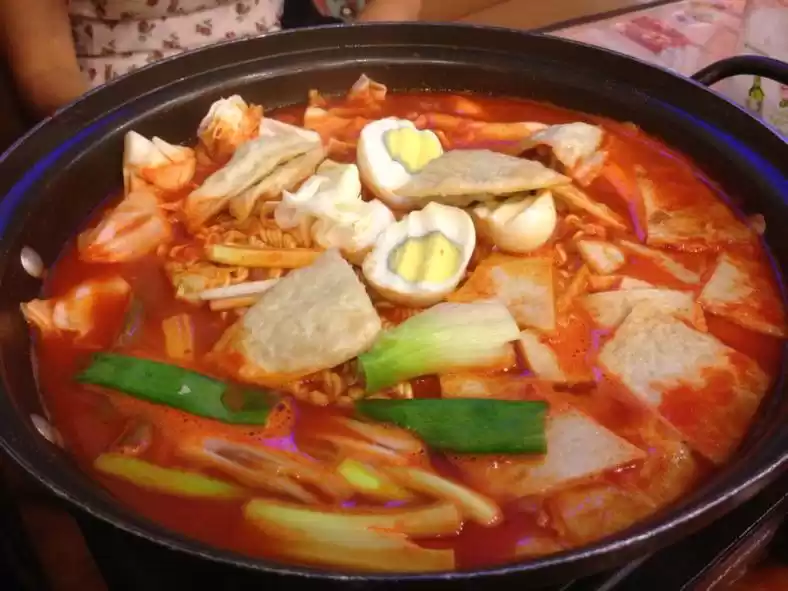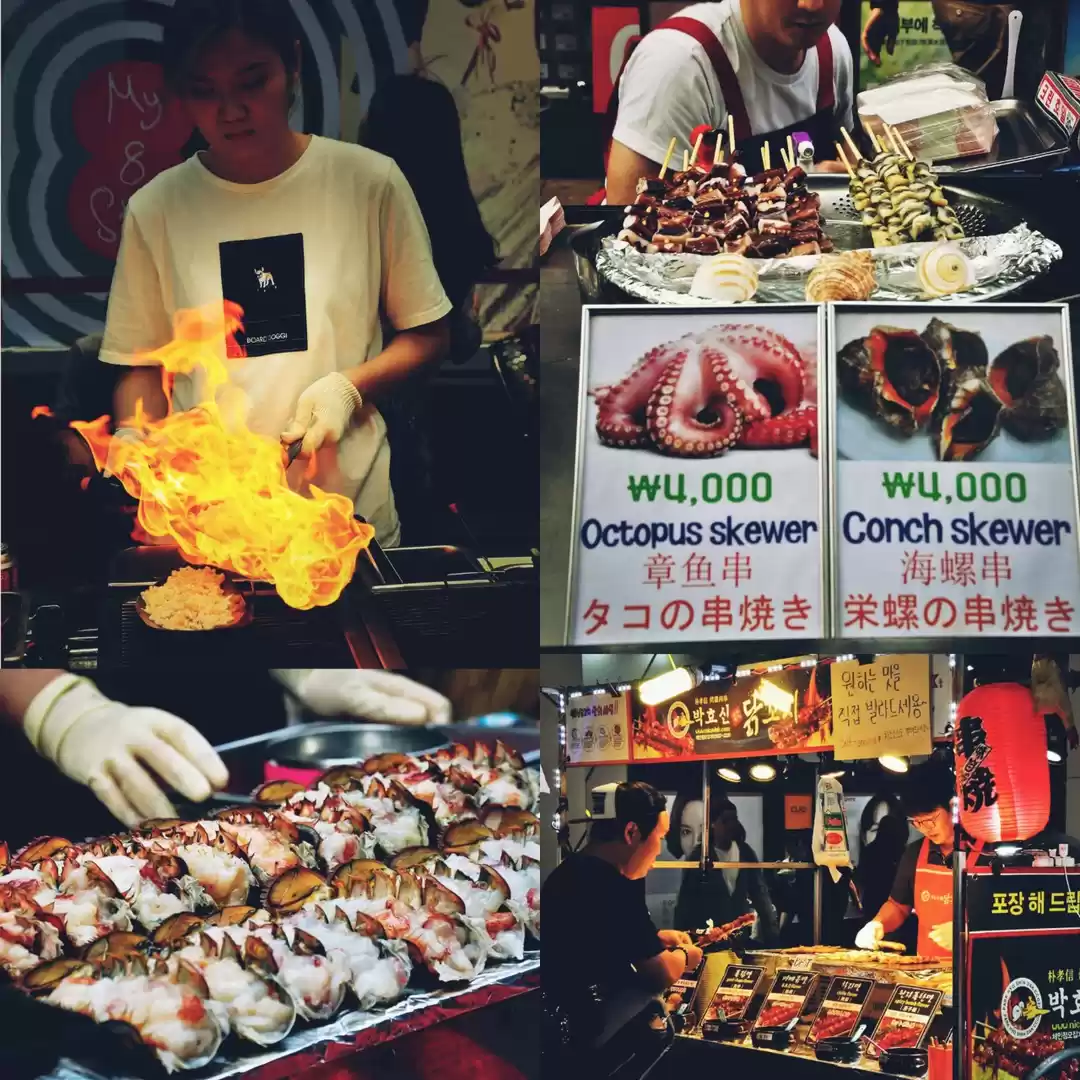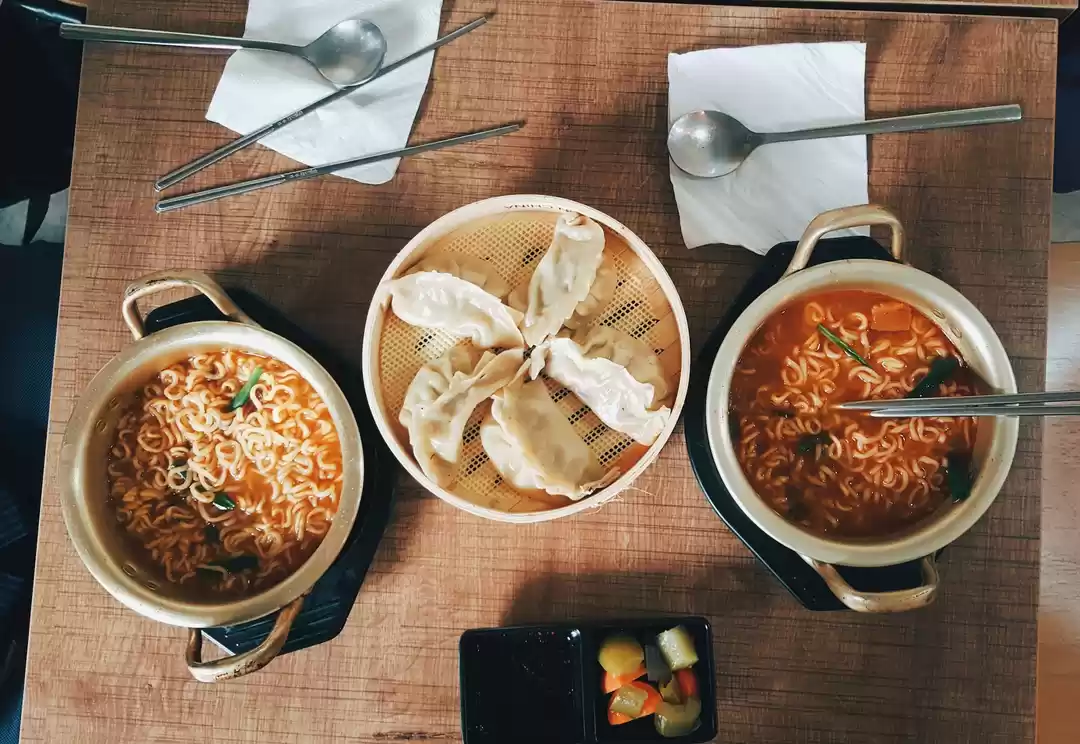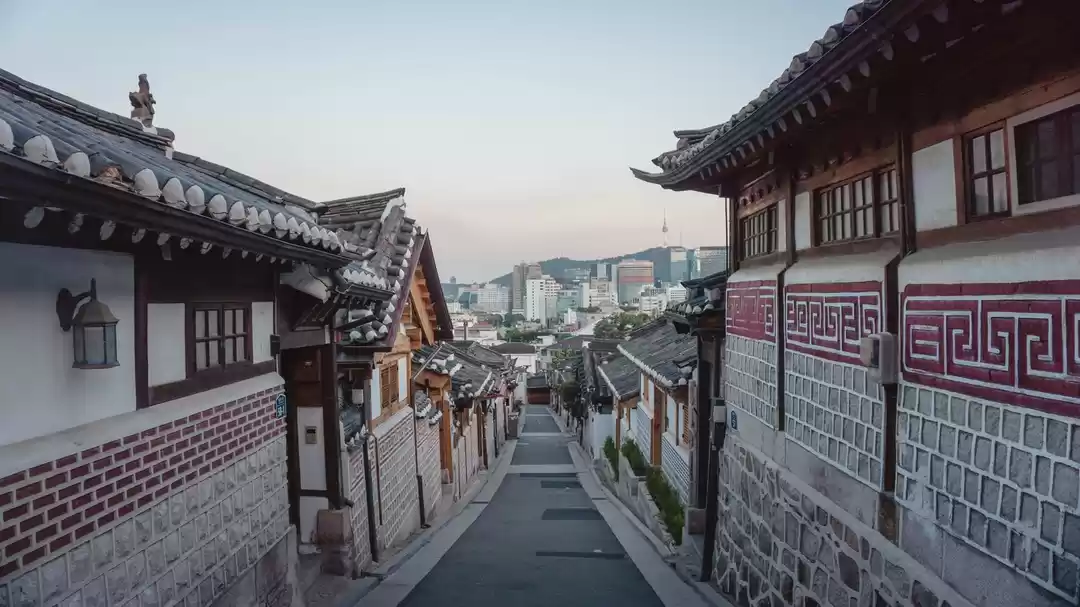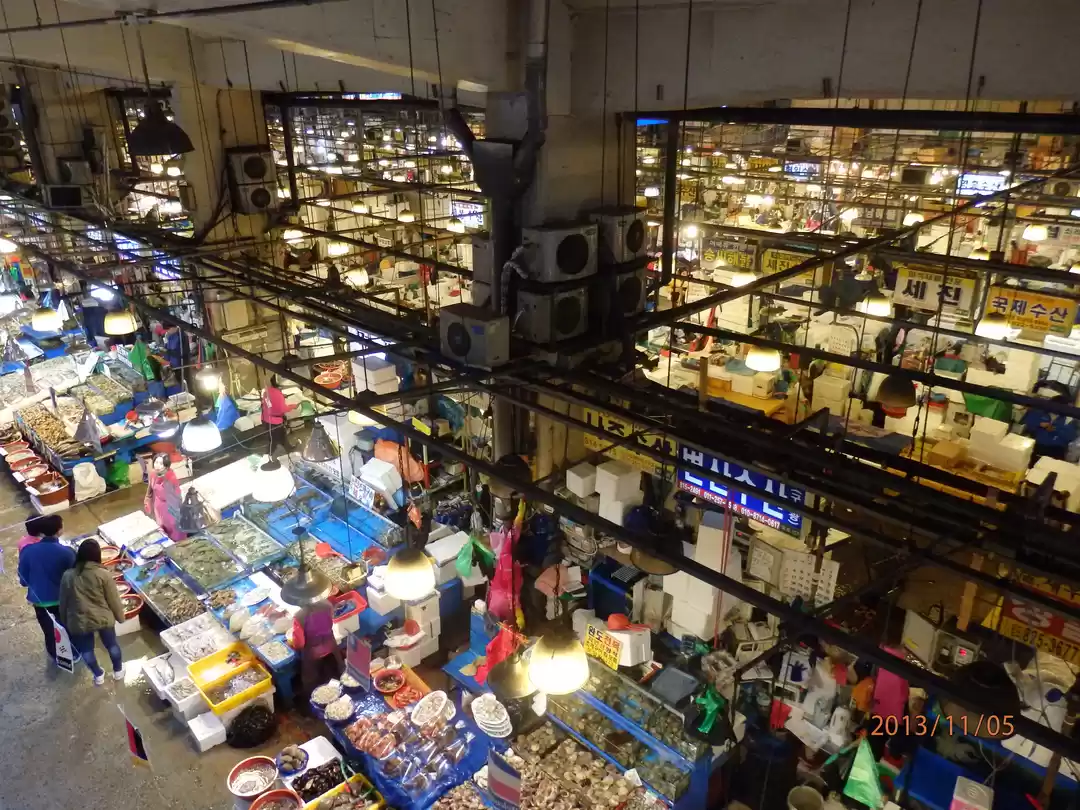
If you love watching K-dramas, you must be familiar with these words: Tteokbokki, Kimchi, Japchae and Soju. These dishes are the stars of Korean cuisine; the ones that make your mouth water and your heart flutter. You can’t find a single episode of any Korean show without spotting a kimchi jar, Samsung Galaxy or a reference to the North-South divide. And if you’re a fan of Hyun Bin and Son Ye-jin, you must have enjoyed their adorable chemistry and food scenes in their smash hit 'Crash Landing on You.'
And I bet you’re already drooling and craving for some Korean food right now. Well, don’t worry, we have you covered. So, before you jet off to South Korea and find yourself overwhelmed gliding through the night markets and chasing the best Korean street food in Seoul - make sure to bookmark this ultimate South Korean street food guide. Read on!
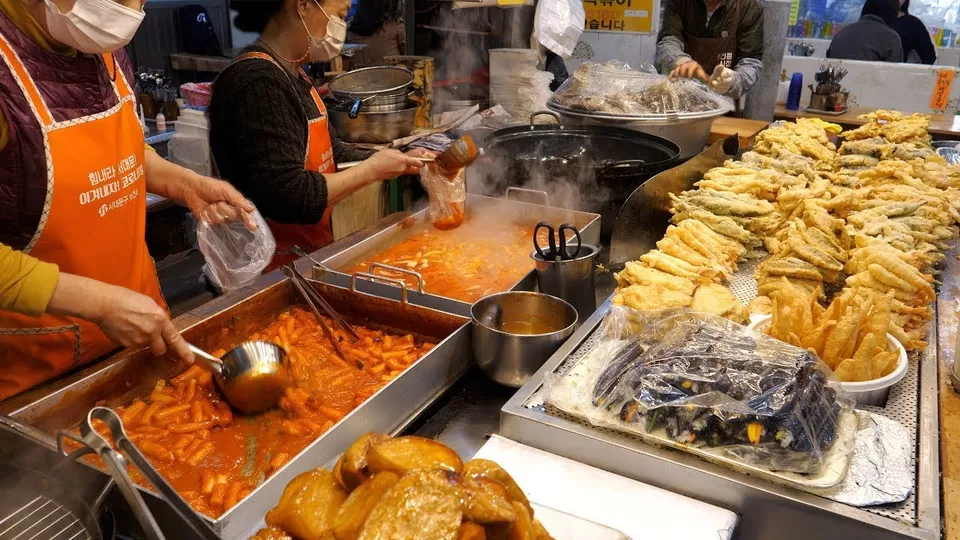
1. Tteokbokki (spicy rice cakes)
Tteokbokki is a heavenly delight of tender and bouncy rice cakes smothered in a rich and spicy sauce made from gochujang (or Korean chili paste). It is the ultimate comfort food for Koreans, as the Seoul Metropolitan Government discovered in a poll. This irresistible street food is often paired with fish cakes and topped with green onions. You can find Tteokbokki at every corner in Seoul and across South Korea.
Where to find it: Dongdaemun Night Market, Myeongdong Night Market and at Mimine in Hongdae

2. Dakgangjeong (Boneless Korean Fried Chicken)
One of the most beloved street foods in Korea is dakgangjeong, or what the world calls Korean Fried Chicken. The skin is thin and amazingly crunchy, coated with a sweet and spicy sauce made from soy garlic or yang yeom.
To keep its incredible crispiness, the Korean fried chicken is usually double-fried after being soaked in the sauce.
Where to find it: Dakgangjeong Alley, Qus Dakgangjeong in Mangwon Market

3. Bomb-Flavored Ddakkochi (Really Spicy Chicken Skewers)
Bomb-flavored ddakkochi is a highly-praised spicy Korean street food, essentially grilled chicken skewers. They are superior to regular chicken skewers (ddakkochi) because the spiciness is mind-blowing.
They are usually grilled with scallions to give a tangy umami balance to the meat, and are spicy, sweet, and savory all in one delicious bite. Besides marinating the meat beforehand, the sweet-spicy sauce is also applied while it is being cooked to boost the flavor.
Where to find it: Myeongdong Night Market, Yeouido World Night Market, and Sindang-dong

4. Eomuk Taeng (Korean Fish Cakes)
Eomuk tang is a fish cake on a stick. The fish cakes are tender and tasty, and each stick is either shaped like sausages, or more often bent in a zigzag. Soy sauce is usually provided to be poured or spread onto your fish cake stick. You’ll usually also enjoy Korean fish cakes with spicy Korean rice cakes, called deokbokki, and some people like to dunk their fish cakes into their spicy sauce.
Where to find it: Dakkochi Alley, Myeongdong Night Market

5. Bungeoppang, Gukhwa-ppang (Red Bean Fish-Shaped Pancakes)
These famous fish-shaped sweet cakes that you can find on the streets of Korea are called Bungeoppang and (the less crunchy chrysanthemum-shaped) Gukhwa-ppang. In Korean, a “bungeo” is a crucian carp that looks like a big goldfish, and “ppang” is bread.
Despite their appearance, the filling of bungeoppang is a sweet red bean paste rather than fish; they’re usually vegetarian-friendly. These golden brown, waffle-like fish cakes have a soft and crispy exterior that reveals the steaming hot, yummy red bean paste. Many sellers also offer cream-filled or Nutella-filled versions.
Where to find it: Dongdaemun Night Market, Hongdae Street, and Bukchon Bungeoppang in Bukchon Hanok Village

6. Gimbap or Kimbap (Korean Sushi Roll)
Gimbap or kimbap is like Japanese sushi rolls. It’s one of the simplest and most handy (already wrapped in plastic) Korean street foods to take and eat. Usual fillings are sliced cucumbers, crispy pickled radish, vegetables, fish cakes, spam, and egg rolled in seaweed and rice flavored with sesame oil.
Where to find it: Nangman Gimbap, Kimbap Heaven (you can find them in several locations in Seoul)

7. Tokkebi Gamja (Korean Corn Dog)
More commonly called Korean corn dogs, these Seoul-style hotdogs are coated in sticky rice flour batter and then soaked with ketchup, mustard, or chili sauce. If you’re in the mood for a treat, a tokkebi gamja hotdog is a sausage (or cheese) wrapped in batter that has a layer of cubed French fries.
It’s also dusted or coated with sugar, and then lavishly drizzled with condiments like ketchup and mayonnaise (usually self-serve).
Where to find it: Kondae, Namdaemun Market, Gwangjang Market

8. Hweori Gamja (Twist Potatoes)
Tornado potatoes are another delicious and very photogenic Korean street food treat. Twisty potatoes, also called tornado fries, got their name because whole potatoes are sliced into spirals and then put on a stick, making a tornado or twister shape.
Sausage can also be twisted with the skewered potatoes (called hweori gamja). It is a patented product created by Agricultural Hoeori Inc.'s Jeong Eun Suk, but it is allowed to be sold in street markets, fairs, and events.
Where to find it: Myeongdong, Hongdae street, and Gwangjang Market

9. Mandu (Korean Dumplings)
Mandu or mandoo are Korean dumplings that are usually stuffed with minced meat (often pork), tofu, bean sprouts, green onions, garlic, glass noodles, and kimchi. It’s another popular Korean street food that can also be served as a main course.
Mandu were traditionally eaten during celebrations or rituals, and can be boiled, steamed or fried. As a street snack, there are normally two options - pork and kimchi mandu. We think they don’t need any extra dipping sauce because they’re already very tasty, but it sure is fun to dip them in the soy-vinegar sauce.
Where to find it: Gaeseong Mandu Koong, Myeongin Mandu, Kkangtong Mandu

10. Twigim (Fried Snacks)
Twigim is a Korean crispy fried snack. The coating is usually made with starch powder, bread crumbs, and flour, while the fillings can be anything you can think of (each one will be marked).
Squid, assorted vegetables, boiled eggs, sweet potatoes, and seaweed noodle rolls are some of the items that are covered in batter and then fried.
These Korean snacks are cheap, easy to eat on the move, and very delicious. This popular snack is also offered as a starter before the main dish in some Korean restaurants.
Where to find it: Insadong, Myeongdong, Hongdae Street
You can also connect with me on Instagram & YouTube.
Ready to travel for free? Earn credits and redeem them on Tripoto’s weekend getaways, hotel stays and vacation packages!
Think we missed out on something? Tell us about it in the comments below. Or write about it here on Tripoto and earn Tripoto Credits!


